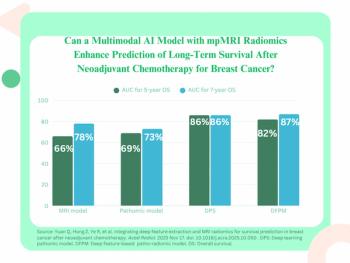
Trial finds perfusion-diffusion mismatch can expand time available for tPA stroke treatment
Results of a much-anticipated study gauging tissue plasminogen activator’s impact on acute stroke patients with MRI-diagnosed penumbra mismatch suggest it is effective up to six hours after the onset of stroke and its administration could lead to improved clinical outcomes in some patients.
Results of a much-anticipated study gauging tissue plasminogen activator's impact on acute stroke patients with MRI-diagnosed penumbra mismatch suggest it is effective up to six hours after the onset of stroke and its administration could lead to improved clinical outcomes in some patients.
Stroke researchers have invested years investigating the value of diffusion- and perfusion-weighted MR imaging in patients with acute stroke. A large subset of these patients reveal a perfusion-diffusion mismatch of their DWI/PWI images. Previous studies have suggested that the area represented by this mismatch could consist of potentially salvageable tissue.
The Echoplanar Imaging Thrombolytic Evaluation Trial is the first major study to establish tPA's safety and effectiveness beyond the established three-hour window in patients with potentially salvageable brain tissue as defined by DWI/PWI mismatch, said principal investigator Dr. Stephen M. Davis, a professor of neurology at the University of Melbourne in Australia.
EPITHET is a randomized placebo controlled phase II trial performed in 15 centers in Australia, New Zealand, Belgium, and Scotland.
The trial involved 101 patients with acute ischemic stroke. They were randomized upon arrival in the emergency room to undergo tPA (n = 37) or placebo (n = 43) treatment within six hours of stroke symptoms. Almost 90% of these patients had a DWI/PWI mismatch.
Investigators found that tPA can restore cerebral blood flow and improve clinical outcomes in these patients. Study findings were released at the American Stroke Association's 2008 International Conference in New Orleans.
"While the effect of late application of tPA on infarct growth - which was the primary outcome - was not significant, there was a strong trend toward infarct reduction," Davis said.
Lytic therapy with tPA was also associated with significant restoration of blood flow at three to five days and improved neurological and functional outcomes at 90 days. The study was not powered to show clinical benefits. Results suggest a phase III trial of tPA versus placebo with about 200 patients per arm, however, could give more definitive answers.
Although the study could not validate the effect of tPA on infarct growth, results across several measures indicate tPA increased reperfusion in the extended time window and correlated with growth attenuation and improved clinical outcomes, Davis said.
"The EPITHET results provide biological support for the extension of the time window for tPA," he said.
For more information from the Diagnostic Imaging archives:
Newsletter
Stay at the forefront of radiology with the Diagnostic Imaging newsletter, delivering the latest news, clinical insights, and imaging advancements for today’s radiologists.




























